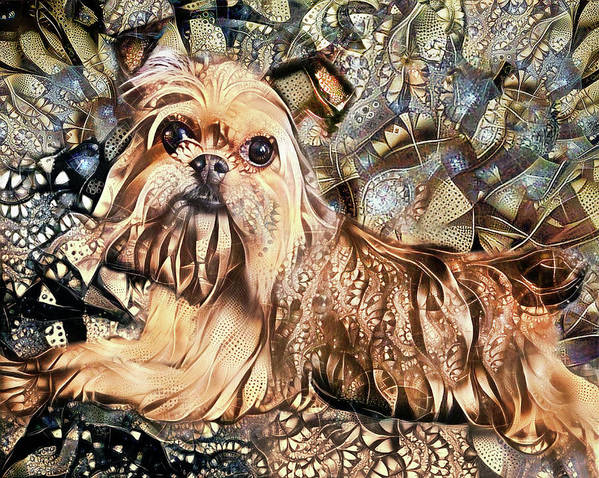
The Veterinary Genetics Laboratory of UC/Davis writes on its website that white spotting patterns occurring in many dog breeds don’t have a uniform genetic basis, and the genetics are complex.
As it happens, that puzzling information (puzzling to us, anyway) appears on the page for the Brussels Griffon, a breed in which we have a pretty good idea of the origin of any white spot showing up on a Griff. To the credit of good breeders, we’ve never seen a Griff with such a spot, and finding a photo of one is all but impossible.
Parenthetically, it should be noted that any white hairs on a Brussels Griffon are a serious fault except for “frost” on the muzzle of a mature dog, which is natural. Furthermore, a white spot or blaze anywhere on the coat is a disqualification per its AKC breed standard. Since it’s mentioned in the standard, some readers may wonder: From where did white hairs, let alone a chest spot, come?
The short answer is that it likely came from a one of the toy breeds bred with the Griffons d’Ecurie, the wire coated stable dogs kept by 19th century coachmen to control vermin in their stables.
The longer answer? Carriage drivers didn’t keep records, but the supposition is that these breeds included the Pug, perhaps the Affenpinscher, and especially the English Toy Spaniel. According to Jeff Bazell, former president of the breed’s AKC parent club, the modern Brussels Griffon developed through three crosses to Pugs and eight crosses to English Toy Spaniels. More on that can be read on this terrific article. That said, the Griff inherited a high domed skull, a very short, tilted-up nose situated high between large, dark, shiny eyes – and probably the white hair, from its English Toy Spaniel ancestor.
Once in a great while, a litter will include a surprise: A puppy that more resembles one of the foundation breeds used to develop its breed than the actual breed itself, and this is true in many breeds. Heritage breeders know how difficult it is to erase certain traits from a breeding program and will place a “throwback” puppy in a pet home where he or she will become a loving and delightful companion, but neutered and eliminated from the gene pool.
“Out damned spot!” is a line from William Shakespeare’s play, “Macbeth,” in which Lady Macbeth is trying to wash imaginary blood from her hands, but it could serve as a reference to how difficult it is to remove certain unwelcomed traits once introduced to a breeding program.
Image: “A Brussels Griffon Dog Named Winston” by Peggy Collins is available to purchase as fine art, and in home decor and lifestyle items here
